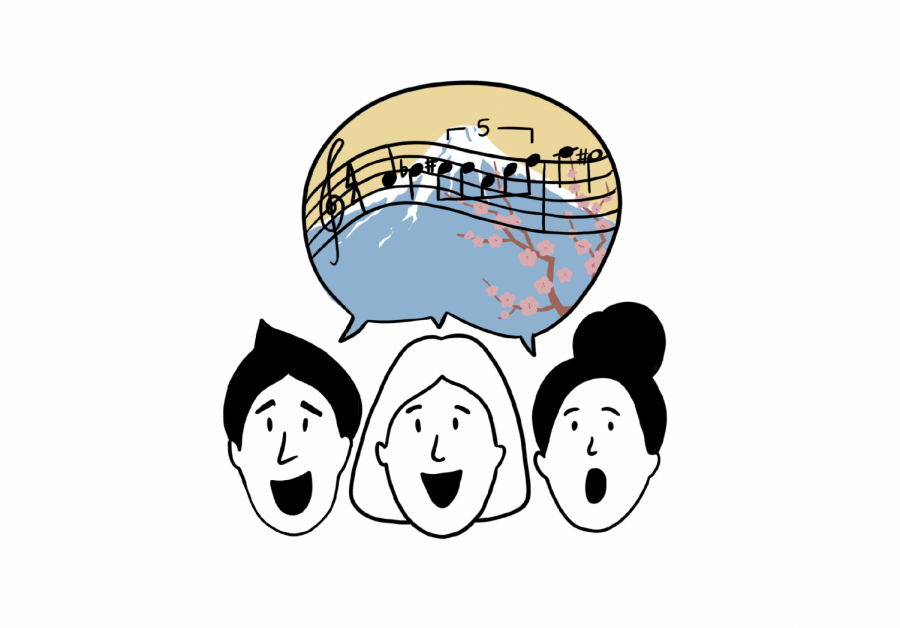UT music community says Eastern music should be celebrated by all
December 19, 2021
Editor’s Note: This article first appeared in the December 2 broadsheet.
The full-bodied sound of Bereket Middle Eastern Ensemble filled the Bates Recital Hall. Forty chorus members accompanied by an instrumental section, composed of both traditional Middle Eastern and modern rock instruments, joined together in song. As the concert came to a close, audience members sprung from their seats, grabbing one another to perform traditional Arabic dances. They united with the musicians on stage in a genuine celebration of Middle Eastern music and culture.
Typically, modern choirs omit Eastern music — more specifically Asian and Middle Eastern music — from their choral repertoire and focus solely on a Westernized cannon. However, vocal performance freshman Gabreauna Nash said she finds this lack of diversity and inclusivity frustrating.
“People have a rigid definition of what classical choral music has to sound like, and they don’t think (Eastern music) is traditional,” Nash said. “They don’t want to seem too different, and it’s almost like a challenge to what they believe.”
Western and Eastern music have many differences ranging from harmonic syntax and the use of improvisation, to the level of cultural intertwinement and the audience-performer dynamic. These discrepancies may make Eastern music seem daunting, resulting in a slow, dragged-out process of including Eastern sound in the classical choral cannon. However, Issa Aji, assistant music theory instructor, wants to force this change forward and foster critical conversations about diversity and inclusion in choral music.
“Why is that happening all so slow?” Aji said. “We’re bound up in the walls of academia, and things don’t happen fast because it’s too much for the gatekeepers to handle. It’ll shake them up too much.”
Music education freshman Taylor Harr said the leisurely paced changes reflect the need for choir directors and music educators to err on the side of caution when teaching Eastern music so they do it respectfully. Because this music comes from cultures that most Americans are familiar with, educators must work to include Eastern songs without tokenizing or culturally appropriating them.
Additionally, Harr said she believes full transparency and communication between students and teachers would help.
“I feel like it just boils down to honesty,” Harr said. “Be open with your students. These pieces deserve to be sung just as much as any other piece. Honesty with your students will lessen the hesitancy. In the music world, we’re always striving to have perfection. It’s okay to admit that you don’t know how to do something.”
Furthermore, because Eurocentric choral literature predominantly tends to exclude minorities, it actively prevents minority students from feeling represented by the music they sing.
“They are people who deserve to be represented just as much as Bach, Brahms and that kind of music,” Harr said. “They deserve to be represented, and it’s also very important for the students to see that they are included.”
According to Aji, this lack of diversity deprives students of the opportunity to fully delve into all that choral music has to offer, putting students at a disadvantage because they are missing out on so much.
“If we want a comprehensive knowledge of music, if we want to understand music at its core, why limit us to this very small little sect of music?” Aji said. “There’s so much more out there. You learn a lot from exploring other music and really taking them seriously.”












